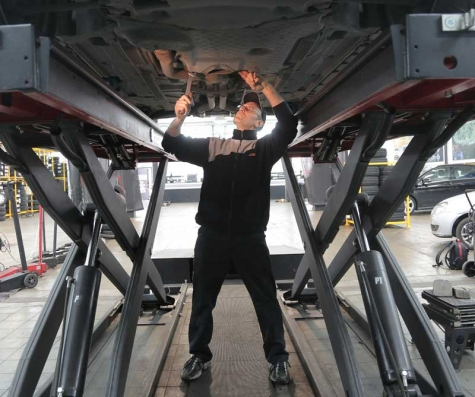General Motors recently rolled out a significant overhaul of the vehicle inspections it calls on auto body shops to perform post-collision, saying the changes in no way compromise safety.
The automaker previously had a long list of such inspections it required “after any collision,” including inspection of the steering wheel and column, the instrument panel mounting points and brackets and seat mounting points.
It now says most inspections are necessary only after “any collision that exceeds minor outer body panel cosmetic distortion.” This eliminates the need for some “pretty invasive” steps, said John Eck, collision manager for GM, in a webinar about the changes, like “removing the headliner or…dash, or measuring a steering column, when all you’re doing is replacing a fascia without any structural repair.” One exception: GM wants “every seat belt of every [GM] vehicle inspected every time” a vehicle is in for repairs, “regardless of the [crash] severity level or what’s being done” to the vehicle.
When damage is more than “minor outer body panel cosmetic distortion,” GM has a list of the “unrelated components that could be subject to damage” for which further inspections are needed.
For each of these, the new document lists different steps necessary based on whether there has been an airbag or pretensioner deployment. If a front airbag has deployed, for example, the steering wheel must be replaced; if not deployed, a visual inspection of the module cover is sufficient, provided no “deformation, distortion or indentations” are seen.
There is also additional information from GM’s engineers about many of the inspections, such as what to look for during visual inspections of different components.
Given only a seat belt inspection is required in the event of collision repairs that involve only “minor outer body panel cosmetic distortion,” Eck was asked to clarify what types of repairs that might include.
“If you’re looking at just the front quarter panel, no mounting brackets or no structural support brackets are damaged,” Eck cited as an example. “Or a fascia that might be cracked but the bumper bars aren’t damaged and there’s no airbag deployment. Or that side mirror that comes off backing out of a garage.”
A dime-sized dent on a rocker panel? “A rocker panel is not a cosmetic outer body panel,” Eck said, meaning safety inspections must be done.
The document applies to all GM vehicles, though it has been integrated into GM’s online repair procedures only for 2021 and 2022 models so far. Use the search term “inspection” to find the document in GM’s online system for those vehicles. Until it is integrated with the repair information for older vehicles, it can be downloaded at www.genuineGMparts.com.
Eck emphasized the inspection document in no way replaces any of the needed vehicle repair procedures such as scanning or calibrations.
“This is simply talking about what you should be inspecting during the repair process,” he said. “It is only part of the process. It doesn’t replace any of the other requirements we may have.”
Eck was also asked about the issue of insurers refusing to pay for the post-crash inspections GM calls for.
“It’s a touchy issue for me as an OEM. We’re not the ones paying the bill,” Eck said. “The repairers are the ones doing the work. Our job is to provide all the content and all the information necessary for the repairer to say, ‘This is what I need to do to repair the vehicle properly, safely, and to make sure it’s ready to go back on the road.’ And he should get paid for the work that is necessary for that to happen. But it’s hard for us as an OEM to step in the middle of a conversation about a transaction that is happening between the repairer and the insurer.”
He said he hopes insurers see the revised post-crash inspections as “a reasonable approach without compromising safety.” He also said vehicles continue to change, and the excuse of “Well, we’ve never paid for that in the past,” shouldn’t apply.
“It’s what should we be doing now with what we have and what we know and what these vehicles are expected to do and perform relative to protecting the occupants inside and [pedestrians] outside the vehicle,” Eck said.
GM acknowledged last year that among 17 automakers, it and Subaru were the only two that required extensive inspections following any collision, regardless of severity.










John Yoswick